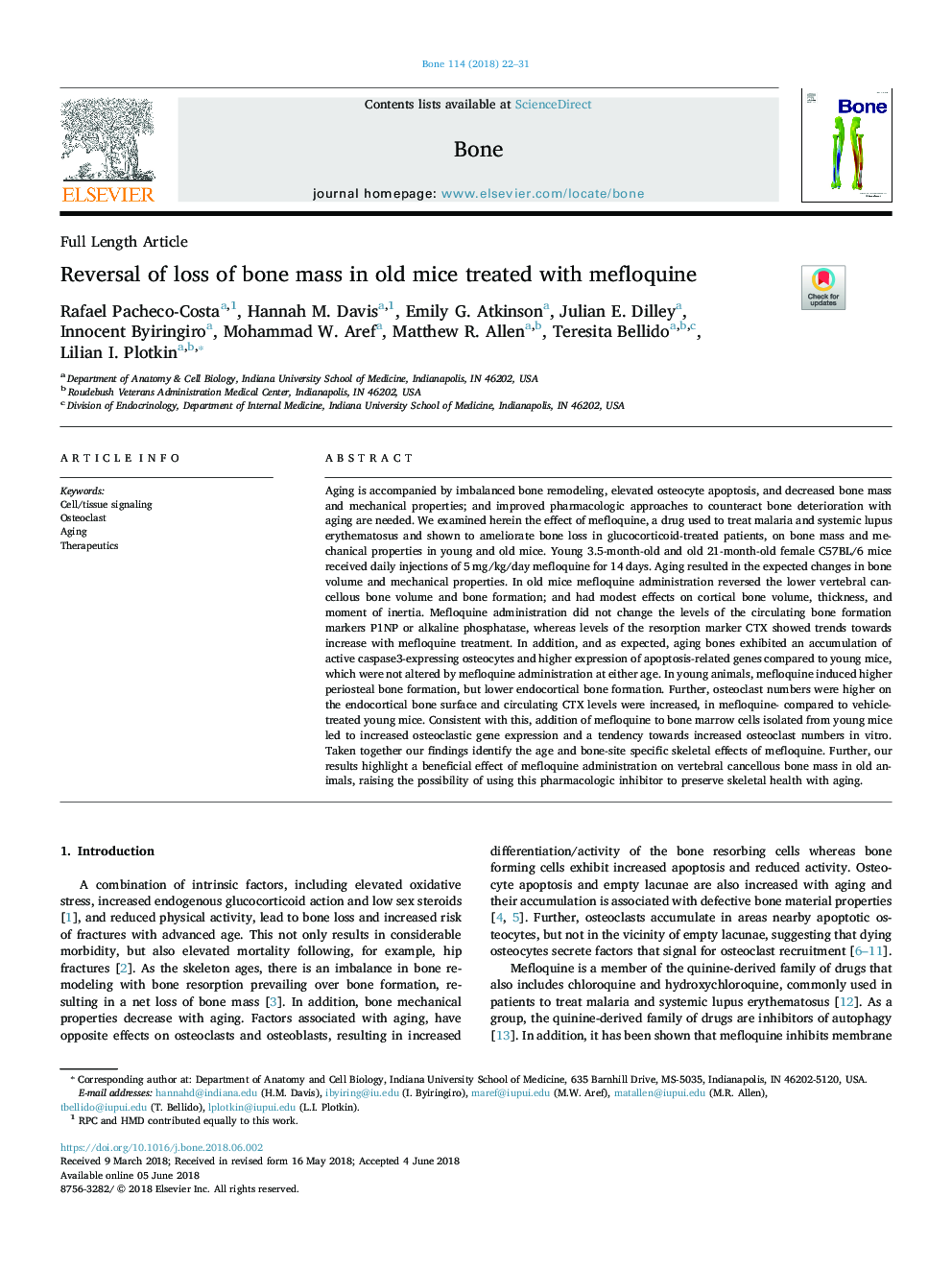| کد مقاله | کد نشریه | سال انتشار | مقاله انگلیسی | نسخه تمام متن |
|---|---|---|---|---|
| 8624775 | 1568105 | 2018 | 10 صفحه PDF | دانلود رایگان |
عنوان انگلیسی مقاله ISI
Reversal of loss of bone mass in old mice treated with mefloquine
ترجمه فارسی عنوان
معکوس از دست دادن توده استخوانی در موشهای قدیمی که تحت درمان با مفالووین قرار دارند
دانلود مقاله + سفارش ترجمه
دانلود مقاله ISI انگلیسی
رایگان برای ایرانیان
کلمات کلیدی
سلول / بافت سیگنالینگ، استئوکلاست، سالخورده، درمان
موضوعات مرتبط
علوم زیستی و بیوفناوری
بیوشیمی، ژنتیک و زیست شناسی مولکولی
زیست شناسی تکاملی
چکیده انگلیسی
Aging is accompanied by imbalanced bone remodeling, elevated osteocyte apoptosis, and decreased bone mass and mechanical properties; and improved pharmacologic approaches to counteract bone deterioration with aging are needed. We examined herein the effect of mefloquine, a drug used to treat malaria and systemic lupus erythematosus and shown to ameliorate bone loss in glucocorticoid-treated patients, on bone mass and mechanical properties in young and old mice. Young 3.5-month-old and old 21-month-old female C57BL/6 mice received daily injections of 5â¯mg/kg/day mefloquine for 14â¯days. Aging resulted in the expected changes in bone volume and mechanical properties. In old mice mefloquine administration reversed the lower vertebral cancellous bone volume and bone formation; and had modest effects on cortical bone volume, thickness, and moment of inertia. Mefloquine administration did not change the levels of the circulating bone formation markers P1NP or alkaline phosphatase, whereas levels of the resorption marker CTX showed trends towards increase with mefloquine treatment. In addition, and as expected, aging bones exhibited an accumulation of active caspase3-expressing osteocytes and higher expression of apoptosis-related genes compared to young mice, which were not altered by mefloquine administration at either age. In young animals, mefloquine induced higher periosteal bone formation, but lower endocortical bone formation. Further, osteoclast numbers were higher on the endocortical bone surface and circulating CTX levels were increased, in mefloquine- compared to vehicle-treated young mice. Consistent with this, addition of mefloquine to bone marrow cells isolated from young mice led to increased osteoclastic gene expression and a tendency towards increased osteoclast numbers in vitro. Taken together our findings identify the age and bone-site specific skeletal effects of mefloquine. Further, our results highlight a beneficial effect of mefloquine administration on vertebral cancellous bone mass in old animals, raising the possibility of using this pharmacologic inhibitor to preserve skeletal health with aging.
ناشر
Database: Elsevier - ScienceDirect (ساینس دایرکت)
Journal: Bone - Volume 114, September 2018, Pages 22-31
Journal: Bone - Volume 114, September 2018, Pages 22-31
نویسندگان
Rafael Pacheco-Costa, Hannah M. Davis, Emily G. Atkinson, Julian E. Dilley, Innocent Byiringiro, Mohammad W. Aref, Matthew R. Allen, Teresita Bellido, Lilian I. Plotkin,
